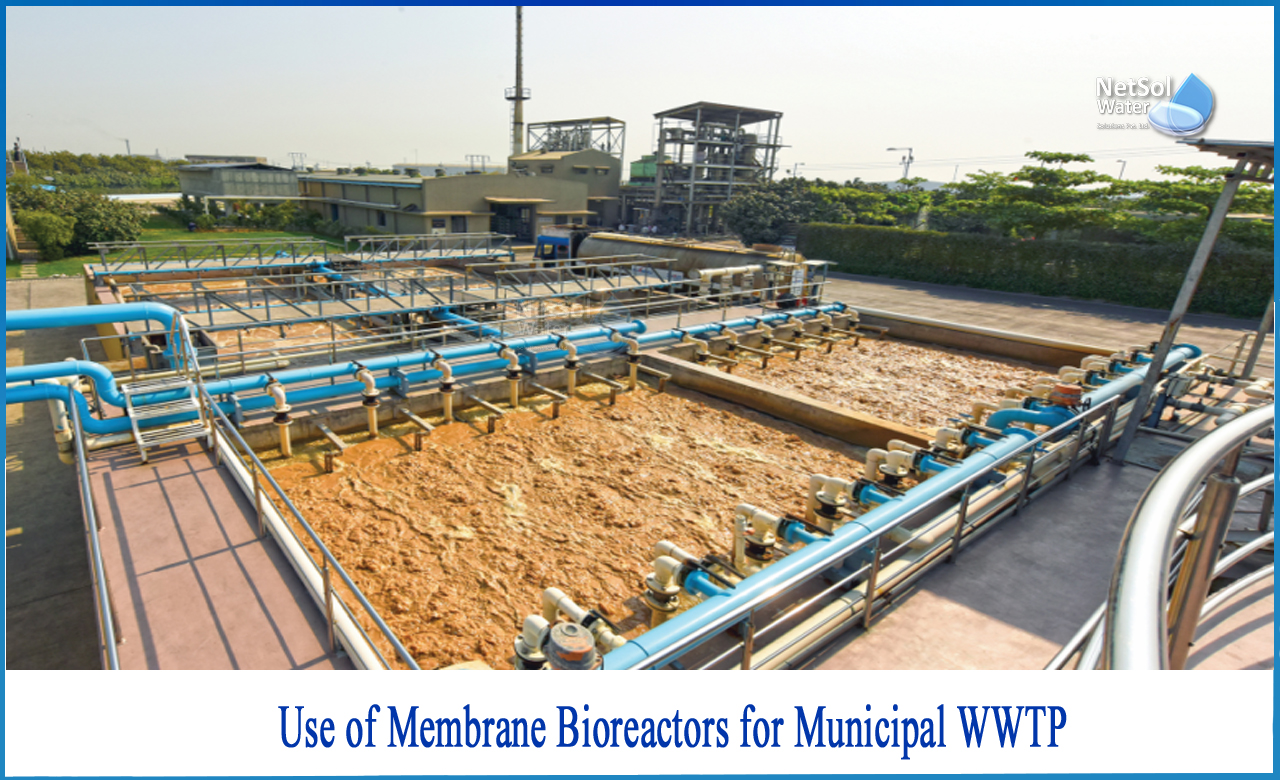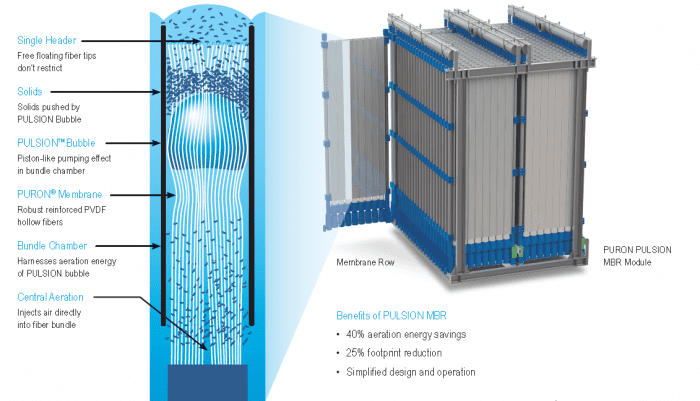How Membrane Bioreactor Contributes to the Reduction of Energy Consumption in Water Treatment
The Benefits of Membrane Bioreactors in Sustainable Wastewater Administration
Membrane layer bioreactors (MBRs) represent an essential innovation in lasting wastewater monitoring, properly combining organic therapy with innovative membrane layer filtration technology. This combination not only improves effluent quality by effectively eliminating pollutants however likewise opens up methods for water reuse in numerous applications, hence addressing the pressing requirement for resource conservation. Furthermore, the portable layout of MBRs adds to substantial decreases in environmental effect and functional expenses. As the demand for sustainable remedies magnifies, exploring the multifaceted benefits of MBRs might expose unexpected effects for the future of wastewater therapy systems.
Summary of Membrane Layer Bioreactors
Membrane bioreactors (MBRs) represent a considerable development in wastewater therapy innovation, incorporating biological destruction with membrane filtering to enhance the effectiveness of the treatment procedure. This innovative system combines the benefits of standard activated sludge processes with membrane layer technology, permitting enhanced solid-liquid splitting up. MBRs utilize semi-permeable membrane layers to different cured water from biomass, resulting in high-grade effluent that can be reused or safely released into the environment.
The functional layout of MBRs typically involves a bioreactor where microorganisms break down natural matter, complied with by a membrane layer unit that filters the blended liquor. This arrangement not only lessens the impact of the therapy center but likewise enables higher biomass focus and lowered hydraulic retention times. Additionally, MBRs are qualified of dealing with a bigger series of pollutants, consisting of pathogens and nutrients, making them suitable for numerous applications, from municipal wastewater treatment to industrial effluent processing.
The combination of MBRs into wastewater administration systems is a sign of an expanding fad in the direction of reliable and lasting methods in ecological design. Their capability to generate high-quality effluent while decreasing room needs positions MBR technology as a principal in modern-day wastewater therapy solutions.
Boosted Effluent Quality

The membrane layer filtering process serves as a physical barrier, making it possible for the retention of bacteria and particulate issue, which adds to a clearer and cleaner effluent (Membrane Bioreactor). In addition, MBRs operate at greater biomass focus than conventional triggered sludge systems, advertising much more efficient biodegradation of contaminants. This causes a reduction in biochemical oxygen demand (FIGURE) and complete put on hold solids (TSS) degrees in the final effluent
In addition, MBRs demonstrate exceptional efficiency in treating difficult wastewater compositions, such as industrial effluents and wastewater with high nutrient lots. Because of this, the effluent created is frequently of greater quality, permitting even more adaptable disposal options and decreased ecological impact. Inevitably, the enhanced effluent high quality attained via MBR innovation emphasizes its vital duty beforehand sustainable wastewater administration practices.
Water Reuse Opportunities
The top notch effluent generated by membrane bioreactors (MBRs) opens up significant chances for water reuse in numerous applications. MBRs effectively remove pollutants, consisting of virus, put on hold solids, and organic matter, resulting in treated water that meets or surpasses governing criteria for reuse. This top quality permits the execution of water recycling initiatives across diverse industries.
One famous application is in agriculture, where treated wastewater can be used for irrigation, promoting lasting farming practices while conserving freshwater resources. Additionally, MBR-treated effluent can be used for commercial procedures such as air conditioning, cleansing, and as a procedure water resource, dramatically decreasing the need for safe and clean water in these operations.
In city environments, MBRs assist in using redeemed water for landscape watering, toilet flushing, and various other non-potable usages, adding to the general durability of water systems. Moreover, the combination of MBR technology in decentralized systems aids in managing local water needs, especially in water-scarce areas.
Decreased Environmental Influence
Exactly how can the adoption of membrane layer bioreactors (MBRs) add to a minimized environmental influence in wastewater administration? MBRs considerably boost the therapy efficiency of wastewater while minimizing eco-friendly disturbances. By incorporating organic therapy processes with membrane layer filtering, MBRs efficiently get rid of a vast variety of pollutants, consisting of raw material, nutrients, and microorganisms. This advanced filtration leads to higher-quality effluent, which is important for shielding aquatic ecosystems and lowering the worry on all-natural water bodies.
In addition, MBRs operate at reduced hydraulic retention times contrasted to traditional systems, causing smaller treatment plant footprints. This portable layout decreases land usage, therefore maintaining natural habitats and biodiversity. The procedure additionally produces much less sludge than standard methods, reducing disposal difficulties and lowering greenhouse gas emissions linked with sludge administration.
In addition, MBRs facilitate the recovery of important resources, such as water and nutrients, contributing to a circular economic climate. By making it possible for water reuse for watering or commercial processes, MBRs aid alleviate freshwater scarcity, therefore promoting sustainable water use practices. Eventually, the adoption of MBR technology represents a considerable stride in the direction of reducing the ecological influence of wastewater administration systems.
Economic Advantages of MBRs

Furthermore, MBRs help with the production of premium effluent, which can be recycled for different applications, such as agricultural watering and industrial processes - Membrane Bioreactor. This reuse capability can significantly lower water purchase prices, giving a monetary reward for industries facing rigorous water guidelines
The small style of MBR systems likewise results in lowered land demands, which is specifically beneficial in metropolitan areas where property is expensive. By read review reducing space, towns and industries can save on land procurement and upkeep expenditures.
Moreover, MBRs typically call for much less regular maintenance and have a longer life-span than standard systems, further contributing to cost financial savings. In summary, the financial advantages of MBRs-- varying from reduced functional costs to land financial savings and effluent reuse-- make them a compelling selection for sustainable wastewater monitoring, using both long-term and instant economic benefits.
Conclusion
In addition, MBRs add to reduced environmental impacts through portable layouts and reduced sludge generation. Economic benefits even more boost their practicality, making MBRs an appealing service for resolving the obstacles of wastewater therapy and promoting sustainable resource monitoring.
Membrane layer bioreactors (MBRs) represent a critical development in sustainable wastewater monitoring, properly combining organic therapy with advanced membrane filtration modern technology.Membrane layer bioreactors (MBRs) stand for a significant innovation in wastewater therapy innovation, integrating organic degradation with membrane layer filtering to Full Report boost the efficiency of the therapy procedure.Accomplishing improved effluent quality is one of the most substantial advantages of using membrane bioreactors (MBRs) in wastewater treatment.In addition, MBRs demonstrate excellent efficiency in treating tough wastewater structures, such as industrial effluents and wastewater with high nutrient lots.Incorporating membrane bioreactors (MBRs) right into wastewater administration not just reduces ecological impact yet likewise offers considerable economic benefits.